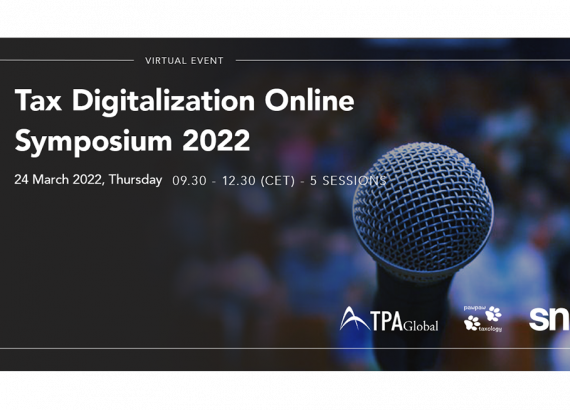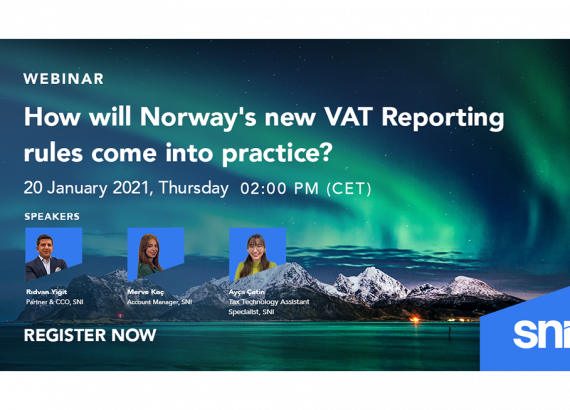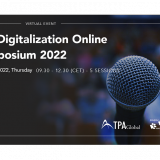Robbert Hoogeveen – Freelance SAP TAX Consultant & Functional Design Expert | Netherlands

1.Hi Robbert! Thank you that you have agreed to talk about tax technology. I know, that you have great knowledge and many years of experience in incorporating technology into taxes. Could you please tell our Readers a bit more about yourself: your career, your current role?
I’m Robbert Hoogeveen a Tax technology professional from the Netherlands. I have a master degree in Business administration and started my career at the Dutch Tax authorities as a Tax auditor. I did audits at very small accompanies but also very large companies in the Oil and Gas industry. After 11 years I moved to Shell International where I had multiple roles: implementing SAP for the European Chemical division, manager Indirect Tax Netherlands and Global design architect VAT and Excise duties for the Global SAP roll-out in the Downstream division. In the global SAP roll-out I was responsible for the implementation of OneSource as external tax engine. After 12 years I started with the Key Group with focus on support on Tax Technology for Indirect tax. I have also worked on another Tax engine “Taxmarc” which is currently part of PwC. After about 5 years I left the Key Group and now I’m an independent self employed Tax technology expert. I have worked with SNI in the last 4 years, with a break of 2 years due to contractual restrictions with the Key group on the development of the different Add-on solution.
In my current role I’m working as a subject matter expert in a big restructuring project with a SAP implementation and is supporting SNI with new developments for tax reporting.
2. Thank you for that introduction. Let’s deep-dive into tax technology topic. I believe, that we can stick to indirect taxation (VAT), as that is a tax, where technology has the biggest impact on. I would like to discuss some particular areas. We know, that without correct input (source) data, automation of VAT reporting might be unsuccessful. How to ensure correctness of VAT determination of sales and purchase transactions? Usually, sales side VAT application is (at least to some extent) automated, based on flows, product categories etc. More issues appear on purchase side. VAT coding of AP invoices is still manual process, quite often. What is your view here? What are the biggest challenges in VAT determination, especially in case of purchase invoices? Is it complexity of business models of big organizations? Maybe different templates of invoices which make OCRs less efficient? Last but not least, what is your prediction for the future regarding this area? Will for example e-invoice clearance model, like SdI in Italy, “kill” OCR and enable companies to finally automate VAT determination process? As most of data relevant for VAT determination will be in single standardized structure.
In most companies the automation of VAT is indeed already implemented. The key difference for VAT automation between Sales and Purchase is the level of control of the required source data: in Sales companies do have full control of the required source data for determining the correct VAT treatment. Although in very complex sales flows it is still challenging. Especially when more then 2 parties are involved in the transaction combined with a cross border transaction. For Purchases the vendor is defining the applicable VAT treatment and the company is therefore not fully in control of the applicable data for VAT automation. But in SAP it is possible to determine the applicable VAT treatment with using VAT condition records. This results in a kind of “expected” VAT treatment which will be checked against the VAT treatment selected at vendor invoice posting. If there is a mismatch between the VAT treatments the invoice will not be automatically posted. This triggers a control process to identify the correct VAT treatment for the invoice. It is not a fully automated process but it supports the VAT compliance process. This would also be possible for the e-invoice clearance models like in Italy (or standard e-invoicing). Based on the available data in the AP e-invoice the applied VAT treatment of the vendor is known and could be translated to the applicable VAT treatment for the AP posting. It is definitely an opportunity to reduce the number of errors by manually selecting the AP tax code during invoice posting.
3.Once we have source data, we need to produce different VAT reports like VAT return or ECSL (recapitulative statement). Also, Intrastat reporting is usually in the scope of tax team responsibilities, although that is not fully VAT related report. I know, that even some really big organizations rely on spreadsheets as a “solution” for VAT reporting. However, more and more companies invest in technology enabling automation of generating VAT reports. What is your view here? Do you consider that external reporting tools (examples: OneSource by Thomson Reuters, Avalara products) are best option for automation of VAT reporting? Also, most of those tools provides built-in quality checks on correctness of VAT data, what makes them more attractive. However, on the other hand there are a lot of issues which may appear during implementation of such solutions. Due to different reasons: bad quality input data, what we discussed, various ERP systems which big organizations may use, not standardized and not harmonized VAT process.
For accurate VAT reporting the key is still accurate source data in the ERP system. The controls in the external reporting tools do have added value but in most cases it are very obvious controls that should already be “executed” in the ERP system. For example by the more automated approach for Purchase as described before. Controls in reporting tools are by definition after the fact and real time controls are preferred. I’m not against using excel spreadsheets but it should always be based on an informed decision. In some cases the reporting requirements from Tax authorities are not aligned with the available data in the ERP system and then automated reporting from the ERP or External tools is not possible. Excel could in these cases be a solution. Unless the external reporting tools do have options to include manual corrections as well. An example is the option of the SNI solution for VAT reporting in Poland. In principle it is based on a fully automated creation of the VAT report but there is an option to download the data to excel. Adjustments could be made in the excel template and uploaded to the standard tool.
4.Thank you. I would like to discuss separately new VAT reporting requirements. They are spreading across Europe (and not only), just to name some of them: SAF-T, SdI (Italy), SII (Spain), Control Statement (Czech Republic), RTIR (Hungary). All of these obligations are extremely detailed and need to be submitted to tax authorities in strictly defined structure and format (usually XML). Considering that, countries are moving towards real-time reporting it seems to me, that external reporting solutions (like discussed above) may not be efficient in case of those type of reporting. The reporting should be directly from ERP system, for instance SAP. Do you agree with this view? What is the best solution to enable new reporting requirements? Are so called SAP add-ons one of most recommended options?
Yes in case of more real-time reporting on transactional level it is recommended to do the reporting from the ERP system. The source data on transactional level are in the ERP system and therefore it is preferred to use the ERP system for the reporting. My experience is primarily based on SAP and in my view the reporting solutions should be provided by SAP in the standard product. That is however, unfortunately, not always the case. So we have to use Add-on products. In my view the SAP e-Document solution is by the way also an Add-on solution. From a functional perspective the important elements for selecting an Add-on solution are: flexibility to customize (based on the company’s business model and used transactional data), automated process to submit the reports/XML to the tax authority, available audit trail including send reports/XML and received messages from tax authority, user friendly overviews and option for controlled manual adjustments (but limited to specific data). The cost of implementation is also important.
5.Apart from meeting VAT reporting requirements, which is the priority for businesses, I can see that currently more and more organizations consider investing in analytics solutions. It seems to me a natural consequence of reporting on very detailed level. We have a huge amount of data, which – apart from reporting – might also be a great source of data for analytics tools. Tax/ finance managers have an insight on various VAT areas, very often in attractive looking form (dashboards). If we also apply machine learning, AI and all these new, trendy concepts companies may for instance predict some future tax implications. Is it already right time to think about investing in analytics tools? Do you think, that for example AI may help in VAT area? Or is it still too early?
I don’t believe in Artificial Intelligence in the VAT area. AI is more about finding relations and correlations in a huge amount of unstructured data. In my opinion that is not the case for VAT transactions. The transactional data relevant for the correct VAT treatment are very structured as defined by the ERP and the rules for VAT are known, I agree that it is sometime very complicated. The key success factor for compliant VAT treatment is not analysing after the fact with data-analytics/AI but developing a proper design before implementing in the ERP. Analysis of the business transactions, understanding the VAT requirements, identifying the key source data for VAT determination and combing it all together in a proper design. That will prevent the need to use of data-analytics/AI. I see the approach of using data-analytics/AI more as “cleaning up the mess” while we should focus on avoiding to create “the mess” for VAT.
6.Thank you for this extensive answer. Now, I would like to discuss more general topic. We all understand, that introduction of new VAT reporting requirements is caused because of significant VAT frauds. Tax authorities believe, that detailed VAT reporting can decrease VAT gap, by for example automation of so-called cross-checks (whether a supplier reports same VAT data as a buyer). Do you think, SAF-T or real-time reporting are best solution for preventing VAT frauds? Should countries consider also other solutions like split-payment mechanism, which some time ago has been introduced in very wide scope in Poland?
I believe that real time reporting is the best solution to identify and prevent VAT fraud. But it should be harmonized across all EU countries and also be implemented in all EU countries. Currently we do see that every country that implemented a type of SAFT or invoice reporting system has defined it’s own local requirements. In most cases I don’t believe that all the specific local requirements do not add any value to the prevention of VAT fraud. It only makes the implementations of these reporting requirements more complicated and costly. To be effective the real time invoice reporting should simple and applicable to all companies for both sales and purchases. Simple so not a huge amount of data with different definitions. With only seller identification, buyer identification (VAT registered), invoice number, date and net and VAT amounts (in local and invoice currency) it would be possible to match reported VAT on Sales invoices against reported VAT on Purchase invoices and also the other way around: match reported VAT on Purchase invoices against (not) reported VAT on Sales invoices. Unmatched sales and purchase invoice do trigger additional controls by Tax Authorities. Applicable to all companies and for all EU countries so the data set will be as complete as possible. I’m not in favour of the Italian system with sending the invoices via the Tax authority. The Spanish basic design would be preferred but than with a simple data model. Fraud is not dependent on the reported type of operation or the invoice type.
7.Also, EU Commission has presented the concept of so called “VAT Definitive System”. The proposed changes are revolutionary. Zero rated (exemption with credit) intra-community supply of goods in the country of goods dispatch and intra-community acquisition of goods taxable in country of goods arrival, will be replaced by single intra-EU transaction. That one will be taxable only in the country, where the transport of goods ends. The revolution is that 0% supply will be removed and the supplier will need to issue the invoice with appropriate VAT rate, applicable in the country of destination. We know, that all carousel frauds are using the “benefit” of 0% cross-border supply. Probably, that fraud will be eliminated but will other different ones appear? Last but not least, all above changes would require significant changes in ERP systems, technology solutions and so on. Do you think, that implications on taxpayers, due to changes in regulations are too big? Financial, but also, for instance in accounting/ tax processes.
I believe that this new model from the EU could work in theory but it will not resolve the VAT fraud issue. It would also be very complicated in practice: you have to maintain all the VAT rates in all EU countries in your ERP system. And the applicable rates are not always the same in the EU: in Denmark there is only 1 standard rate of 25%, in Germany there are 2 rates : standard (now 16% but after 1-1-2021 19%) and reduced (5%/7%) and in other countries even 3 different rates. Also the definition of the applicable rate for a specific product is not always the same. The Netherlands is exportin a lot of flowers to EU countries and when sold to IT the rate will be 10% (reduced) and to ES it will be 21% (standard). That will make the VAT determination on Sales extremely complicated and it will result in many errors. For companies involved in VAT fraud it might be even easier: sell to customer abroad with VAT and then not paying the charged VAT to your local tax authority.
8.Thank you. Last question, but important one. Based on your experience, what advice can you give to organizations in order to apply tax technology in most efficient manner? Considering constantly changing VAT environment, new reporting requirements which need to be reflected in ERP systems, how to be up to date with everything? And ensure that required changes are made. Whose role should be underlined? For example, do you think, that organizations should hire more employees with mixed skills: broad tax knowledge but also in-depth understanding of IT impacts of tax regulations, changes?
Automation of VAT has always been the key for being VAT compliant. The focus should be on this automation. Legislative knowledge will remain important but if the legislative rules are not correctly implemented in the ERP system there will be VAT incompliance. The critical success factor will be combining legislative, ERP and business knowledge in centres of expertise. These centres of expertise should get proper responsibilities and authorisation to design and maintain the VAT set-up in the ERP. A more integrated approach is required.












